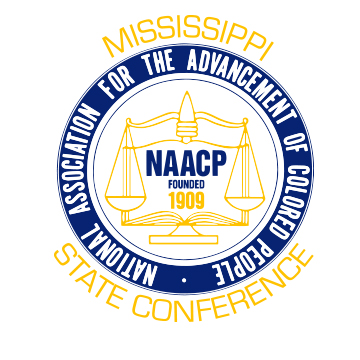Judge Fred Bank’s Opinion on the State Flag
2015/07/09 –
722 So.2d 136
Supreme Court of Mississippi.
Stanley J. DANIELS, a/k/a Rip Daniels; Boyd C. James, III; Emile Hoskins; Gary Holloway; Dixie Daniels and Willie Whitlock
v.
HARRISON COUNTY BOARD OF SUPERVISORS, In its Official Capacity.
No. 96–CA–01129–SCT. | Sept. 17, 1998.
Citizens filed suit against County Board of Supervisors, seeking to enjoin Board from flying Confederate Battle flag on Mississippi beaches and other public property in county. The Circuit Court, Harrison County, Robert H. Walker, J., granted Board’s motion for summary judgment, and citizens appealed. The Supreme Court, Prather, C.J., held: (1) statutory provision pertaining to display of state flag did not prohibit display of Confederate Battle flag or any other flag; and (2) citizens failed to establish that flying single Confederate flag at public beach deprived citizens of state of any constitutionally protected rights.
Affirmed.
BANKS, Justice, specially concurring:
11. While I agree with the result reached by the majority, I write separately to express my concerns regarding the insensitivity inherent in this issue.
12. Harrison County, over the apparent objection of some of its citizens, persists in flying the Confederate battle flag at a publicly owned facility. According to its brief the battle flag is flown to represent one of the eight governments which at one time or another claimed sovereignty over the area. While of little legal significance, the historical accuracy of this assertion is of some interest.
13. The first official flag of the Confederacy was the “Stars and Bars,” which was used as the official flag from March 1861 to May 1863. On May 1, 1863, a second design was adopted as the official flag of the Confederacy. This flag included the battle flag emblem (a/k/a the “Southern Cross”). Finally on March 4, 1865, a short time before the defeat of the Confederacy, a third pattern was adopted as the official flag of the Confederate States of America. This flag also included the “Southern Cross” battle flag emblem, along with a broad bar of red on the fly end of the white field. Thus, the flying of the Confederate battle flag at “Eight Flags” to represent the Confederate States of America which presumably claimed sovereignty over that area at some point in time is historically inaccurate.
14. The Confederate battle flag was “initially designed as a rallying symbol for Confederate troops heading into battle” to fight for, among other things, the right to continue the institution of slavery. See James Forman, Jr., Driving Dixie Down: Removing the Confederate Flag from Southern State Capitols, 101 Yale L.J. 505, 513–14 (1991). Since the defeat of the Confederate States of America, the Confederate battle flag has been used throughout history, not only to commemorate the sacrifices made in support of the cause of the Confederacy, but—most prominently—as a symbol of white supremacy.
15. Quite recently, many state governments adopted the battle flag as a symbol of continued support of white supremacy, segregation and discrimination against persons of black African descent. For example, the Georgia state flag was redesigned to look like the Confederate battle flag following the United States Supreme Court decision in Brown v. Board of Education of Topeka, 349 U.S. 294, 75 S.Ct. 753, 99 L.Ed. 1083 (1955). The Confederate battle flag was raised in Alabama in 1963 by Governor Wallace as part of his “Segregation Forever” campaign. No “johnny-come-lately” by any means, this state adopted the present-day flag which incorporates the Confederate battle flag emblem in 1894, following the adoption of the 1890 Constitution which had the purpose and effect of institutionalizing white supremacy.1
*140 16. Even more recently, notorious and violent white supremacist groups have proudly adopted the Confederate battle flag as their symbol. See John M. Glionna, Unfavorite Son, L.A. TIMES, Oct. 30, 1990, at E1 (Tom Metzger, former Grand Dragon of the Ku Klux Klan and leader of the White Aryan Resistance who was ordered to pay $12.5 million in damages for his role in the killing of a black man in Oregon flew the Confederate battle flag above his home); Paul W. Valentine, Police Boost Security at NAACP, WASH. POST, Jan. 5, 1990, at CI (Ku Klux Klan and neo-Nazi protestors demonstrating outside the national headquarters of the NAACP carried a Confederate battle flag along with signs saying “Nuke the NAACP”); Town Closes Shops to Protest Neo–Nazi March, L.A. TIMES, Oct. 8, 1989, at A28 (two hundred members of the neo-Nazi, Aryan Nations organization carrying Confederate battle flags and wearing Klan robes and Nazi uniforms commemorated Confederate war hero Sam Davis’ birthday in Pulaski, Tennessee, the birthplace of the Klan); Ashley Dunn & Jeffrey Miller, “I Had to Stop it,” Says Guard Who Held Off Alleged “Skinheads”, L.A. TIMES, June 1, 1989, at B1 (a group of Los Angeles skinheads wearing Confederate battle flag tattoos attacked a Middle Eastern couple and baby in a supermarket parking lot); Dan Morain & Robert Chow, Rain Dampens Event as Foes Outnumber “Skinheads” at Rally, L.A. TIMES, Mar. 5, 1989, at A3 (group of fifty white racists and skinheads celebrated an “Aryan Woodstock”; many wore the Confederate battle flag and other racist and anti-Semitic symbols); Louis Sahagun, Marchers in Fontana Fete King, Draw Klan Taunts, L.A. TIMES, Jan. 18, 1988, at A3 (the Imperial Wizard of the Invisible Empire of the Knights of the Ku Klux Klan, J.W. Farrands, sporting a Confederate battle flag button on his lapel flew from his home in Connecticut to California to protest Martin Luther King’s birthday); Mary Jordan & Linda Wheeler, 14 Hurt as Anti–Klan Protestors Clash with Police, WASH. POST, Oct. 29, 1990, at A1 (members of the Ku Klux Klan have marched from the Washington Monument to the Capital carrying a Confederate battle flag and chanting “We are the KKK”).
17. Thus, it is understandable to say the least that there is a large segment of Mississippi’s citizenry which finds the state flag offensive and objectionable. The Eleventh Circuit Court of Appeals in NAACP v. Hunt, 891 F.2d 1555 (11th Cir.1990) recognized that “[c]itizens of all races” are offended by the Confederate battle flag. Id. at 1562. Similarly in Coleman v. Miller, 117 F.3d 527, 530 (11th Cir.1997), that same court—rejecting a group of African Americans’ challenge to the flying of the flag in Georgia—stated thusly:
We recognize that the Georgia flag conveys mixed meanings; to some it honors those who fought in the Civil War and to others it flies as a symbol of oppression. But because the Confederate battle flag emblem offends many Georgians, it has, in our view, no place in the official state flag. We regret that the Georgia legislature has chosen, and continues to display, as an official state symbol a battle flag emblem that divides rather than unifies the citizens of Georgia….
18. Some may theorize to the contrary, but the bottom line is that the Confederate battle flag conjures up images of and is popularly used to symbolize slavery, white supremacy, racism and oppression. It takes no back seat to the Nazi Swastika in this regard. Nevertheless, a common argument in favor of the flag is that it represents a piece of Southern history that should not be forgotten.
19. I have no qualms with preserving history. Such symbols as the Confederate flag and the Nazi swastika are appropriate in museums, exhibits and the like. I do not believe, however, that it is appropriate public policy to continue to fly the Confederate battle flag at government facilities. To continue to do so under the shibboleth of “preserving tradition” readily lends itself to negative connotations that, with good reason, offend a large number of Mississippi citizens *141 —sending a message that their feelings do not matter. One can only wonder what role such divisiveness plays in the problems which continue to plague our state.
20. That said, I agree with the majority here and the Hunt court that the judiciary is not the avenue to effectuate the removal of the Confederate battle flag from public property. Instead, Mr. Daniels and others like him who are compelled to voice their objection to the battle flag should look to the legislature because the legislature is the primary expositor of this state’s public policy.2 If, by its choice of symbols, the legislature announces a public policy of insensitivity to persons still reeling from the effects of hundreds of years of a pernicious system of oppression based upon race, so be it. The world should and will take note.



